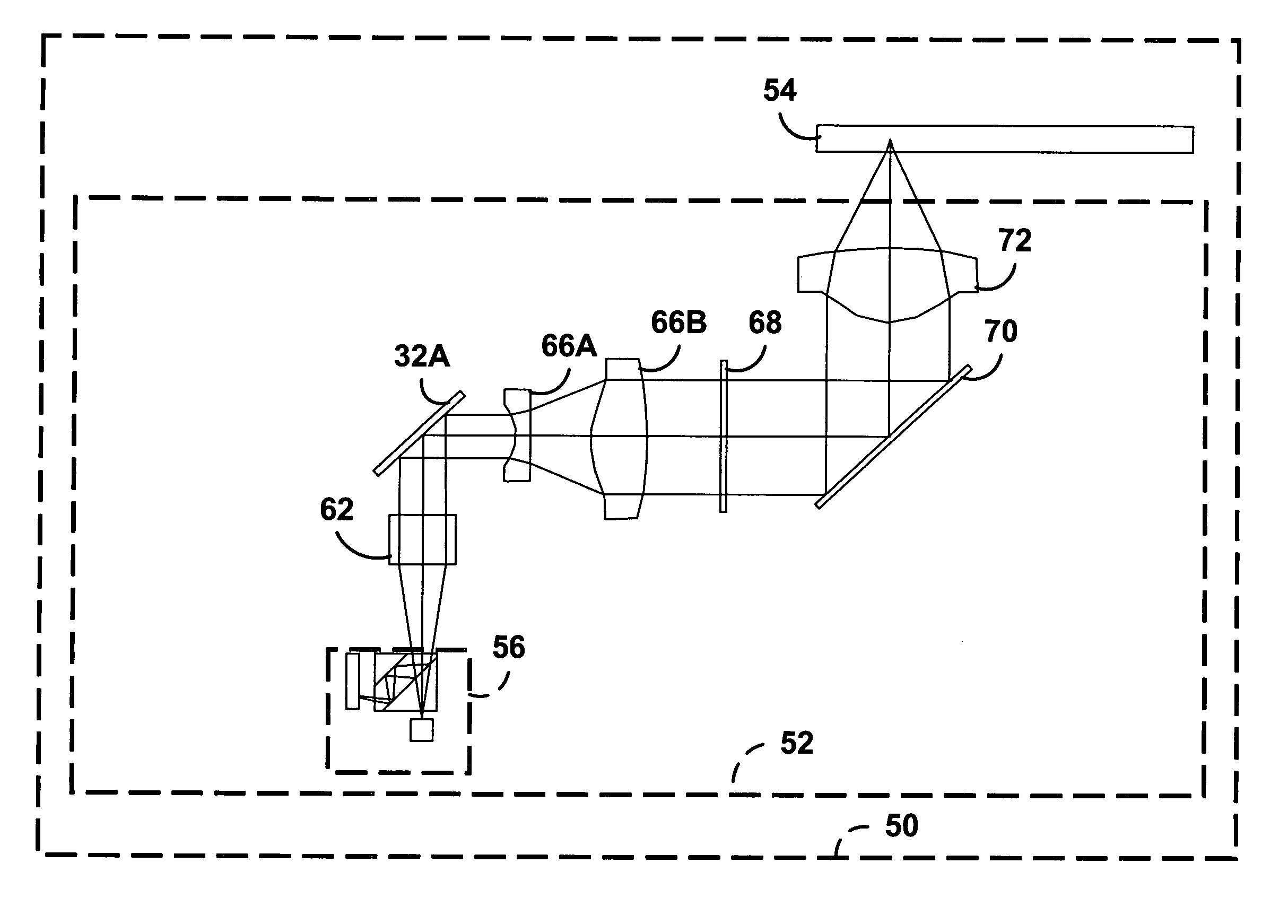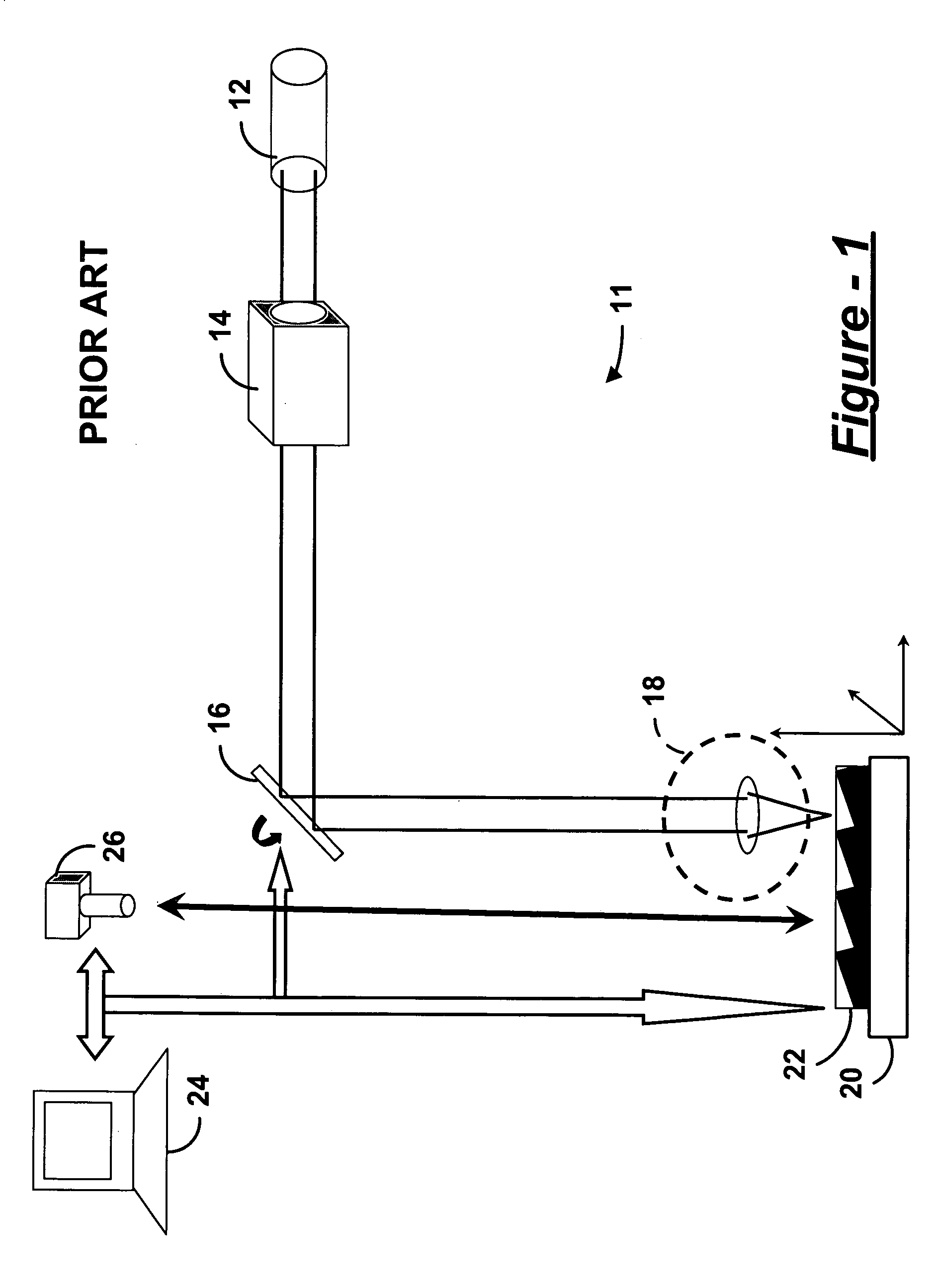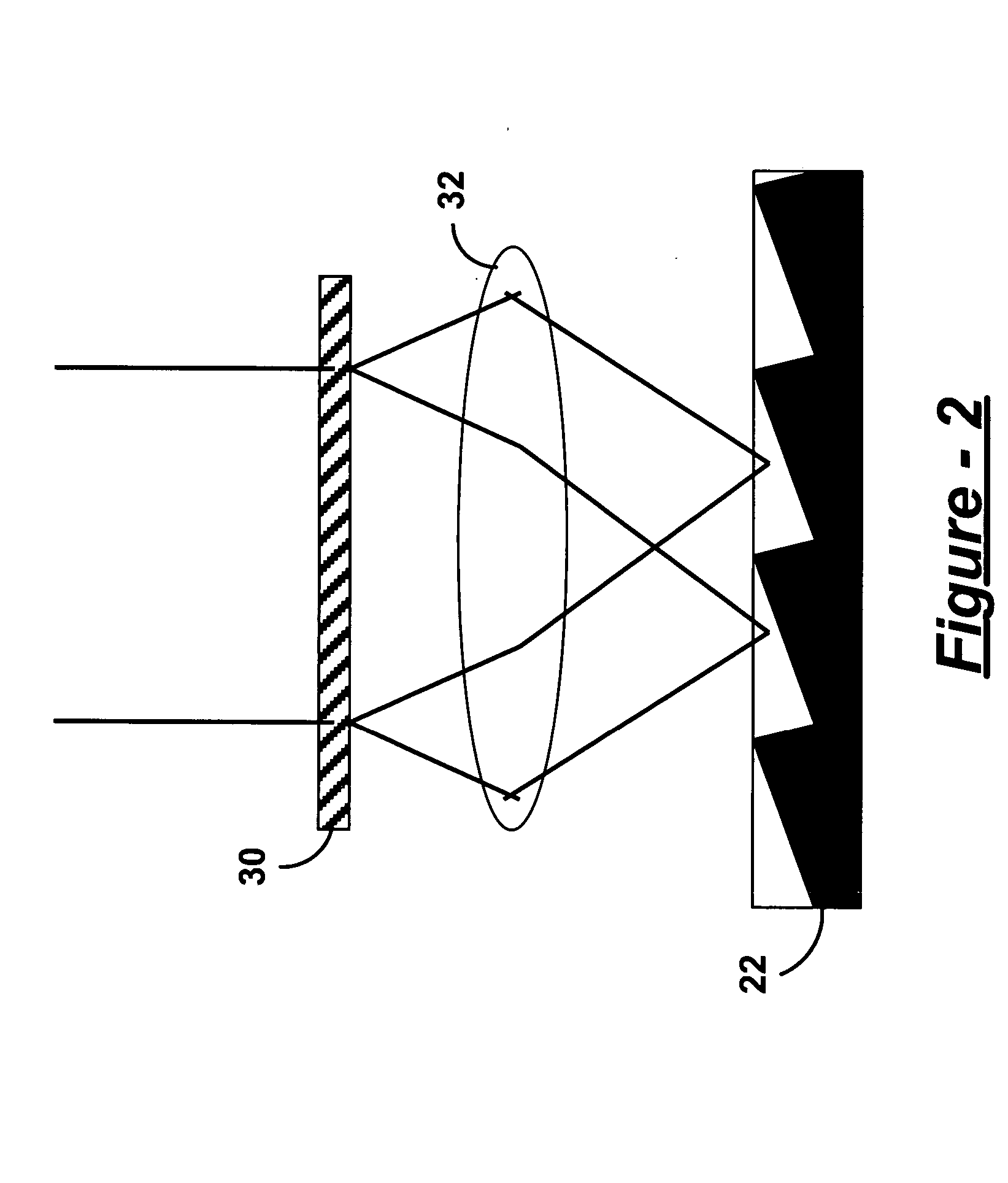Method and apparatus of making highly repetitive micro-pattern using laser writer
a laser writer and micro-pattern technology, which is applied in the direction of photomechanical equipment, instruments, material analysis through optical means, etc., can solve the problems of degrading performance, affecting the quality of laser writing,
- Summary
- Abstract
- Description
- Claims
- Application Information
AI Technical Summary
Benefits of technology
Problems solved by technology
Method used
Image
Examples
first embodiment
[0019] In accordance with the present invention, the laser source 12 is replaced with a high power and / or ultra-fast laser source. Also in accordance with the present invention, focal lens 18 is replaced with an apparatus according to the present invention that includes at least one DOE and having an f-theta lens as illustrated in FIG. 2. The DOE 30 is adapted to split a beam of a laser writer into sub-beams based on a separation distance matching a period of a repetitive structure to be formed in a laser-writable substrate 22. F-theta lens 32 is disposed to intercept the sub-beams and form a periodic distribution of laser writer output beams. Thus, a micro-pattern for a single structure can result in simultaneous exposure of the substrate to multiple repetitions of the micro-pattern in a highly precise manner. While two sub-beams are illustrated, it is possible to form approximately four-hundred sub-beams from a single DOE. Thus, an optical element or other micro-element having hig...
second embodiment
[0020] Turning now to FIG. 3, in a second embodiment, a first DOE 34 can be designed to split the beam to slightly larger than the spacing of each element to allow for dicing / separation. This hierarchical approach allows for parallel processing of multiple elements on a single wafer / substrate 22. For this application, the beam pattern is matched to a desired arrangement, but the arrangement of elements need not be regular. Similarly, if one DOE is not sufficient to provide coverage of the whole useable wafer area, one can first split the main laser beam into multiple separate beams as needed, and direct each beam to a separate, identical DOE for further beam splitting so as increase the covered area.
[0021] In some embodiments, the first DOE 34 produces multiple sub-beams that are intercepted by an additional f-theta scan lens 36. Then, multiple collimating lenses 38A-38D reform the sub-beams for use with multiple instances of the first embodiment. Accordingly, second DOEs 30A-30D op...
PUM
 Login to View More
Login to View More Abstract
Description
Claims
Application Information
 Login to View More
Login to View More - R&D
- Intellectual Property
- Life Sciences
- Materials
- Tech Scout
- Unparalleled Data Quality
- Higher Quality Content
- 60% Fewer Hallucinations
Browse by: Latest US Patents, China's latest patents, Technical Efficacy Thesaurus, Application Domain, Technology Topic, Popular Technical Reports.
© 2025 PatSnap. All rights reserved.Legal|Privacy policy|Modern Slavery Act Transparency Statement|Sitemap|About US| Contact US: help@patsnap.com



